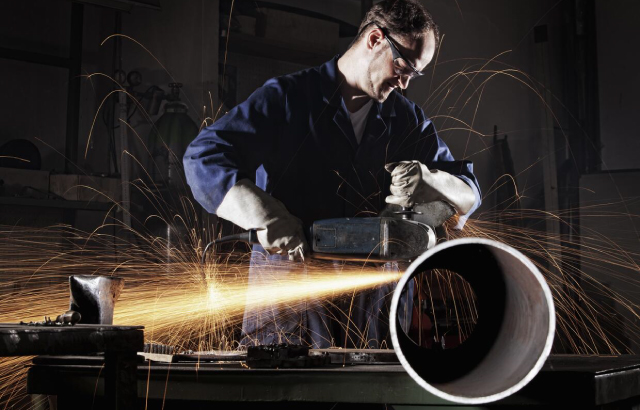Within the intricate domain of engineering and manufacturing, where precision and innovation reign supreme, heavy metal cutting emerges as an essential process that forms the backbone of numerous industries. This exploration delves even deeper into the realm of heavy metal cutting, providing a comprehensive understanding of its profound significance, the diverse range of techniques it encompasses, and its far-reaching applications across an extensive array of sectors.
Significance of Heavy Metal Cutting
In the multifaceted world of engineering and manufacturing, the importance of heavy metal cutting cannot be overstated. Here’s why this process holds such profound significance:
- Versatility Across Industries: Whether it’s crafting components for the aerospace sector, designing intricate automotive parts, or constructing robust buildings in the construction industry, heavy metal cutting’s versatility knows no bounds.
- Precision Engineering: In a world where precision is king, heavy metal cutting delivers the goods. It enables the creation of intricate designs and the production of components with exacting precision, ensuring that everything fits together seamlessly.
- Material Adaptability: Heavy metal cutting isn’t confined to a single type of metal. Engineers and manufacturers can work with a wide array of materials, from the strength of steel to the lightness of aluminum and even exotic alloys.
Techniques in Heavy Metal Cutting
Various techniques are employed to achieve precision in heavy metal cutting. Each method has its own applications:
Oxy-fuel cutting: This is a traditional method of cutting metal that uses a mixture of oxygen and fuel gas to create a high-temperature flame. It is a versatile technique that can be used to cut a wide variety of metals, including steel, stainless steel, and aluminum.
Waterjet cutting: This is a non-thermal cutting process that uses a high-pressure stream of water to cut through the metal. It is a clean and precise process, and it can be used to cut a wide variety of materials, including metal, plastics, and composites. However, it is not as versatile as some of the other methods and cannot be used to cut thick metals.
Laser cutting: This is the most advanced method of cutting metal. It uses a high-powered laser beam to vaporize the metal. It is a very precise and clean process, and it can be used to cut a wide variety of materials, including metal, plastics, and wood.
Plasma cutting: This is a more advanced method of cutting metal that uses a high-pressure stream of plasma to melt the metal. It is a cleaner and more precise process than oxy-fuel cutting, and it can be used to cut thicker metals.
The best technique for cutting metal will depend on the specific requirements of the job. Factors to consider include the type of metal, the thickness of the metal, the desired accuracy, and the budget.
Here are some additional considerations when choosing a metal cutting technique:
- The size of the workpiece: Some techniques, such as oxy-fuel cutting, are not suitable for large workpieces.
- The complexity of the cut: Some techniques, such as laser cutting, are better suited for complex cuts.
- The environment: Some techniques, such as waterjet cutting, are better suited for clean environments.
- The safety of the operator: Some techniques, such as oxy-fuel cutting, can be dangerous if not used properly.
Applications Across Industries
These versatile metal cutting techniques find applications across various industries:
Automotive industry: Metal cutting is used to create a wide variety of parts for vehicles, including engines, transmissions, and body parts. For example, oxy-fuel cutting is used to cut large pieces of metal for car bodies, while laser cutting is used to cut intricate parts for engines and transmissions.
Aerospace industry: Metal cutting is used to create complex parts for aircraft, such as wings, fuselages, and engines. For example, waterjet cutting is used to cut complex shapes for aircraft parts, while plasma cutting is used to cut thicker metals for engine components.
Construction industry: Metal cutting is used to create structural components for buildings, such as beams, columns, and girders. For example, shearing is used to cut long lengths of metal for beams, while milling is used to create precise cuts for columns and girders.
Machinery industry: Metal cutting is used to create parts for machines, such as motors, generators, and pumps. For example, turning is used to create cylindrical parts for motors, while drilling is used to create holes for pumps.
Medical industry: Metal cutting is used to create medical devices, such as implants, prostheses, and surgical instruments. For example, EDM (Electrical Discharge Machining) is used to create precise cuts for implants, while CNC (Computer Numerical Control) machining is used to create complex shapes for prostheses.
Defense industry: Metal cutting is used to create weapons and other military equipment. For example, oxy-fuel cutting is used to cut large pieces of metal for tanks, while laser cutting is used to cut intricate parts for missiles.
Conclusion
Heavy metal cutting serves as the crucial link between the imaginative world of engineering and practical applications, empowering industries to craft precise, dependable, and innovative solutions. As technology continues to advance, the evolution of heavy metal cutting techniques opens up fresh horizons for the future of engineering and manufacturing. Habari Engineering stands as a pioneering leader in this field, driven by an unwavering commitment to innovation and the implementation of cutting-edge techniques. These endeavors not only elevate the precision and efficiency of metal cutting but also reshape the possibilities within the realms of engineering and manufacturing.
Whether you’re envisioning the next phase of aircraft design or constructing the buildings that will define tomorrow’s landscape, heavy metal cutting remains an indispensable process that molds our world and propels progress across a multitude of industries. It represents the fusion of art and science, transforming raw materials into the very foundations of modern civilization.



